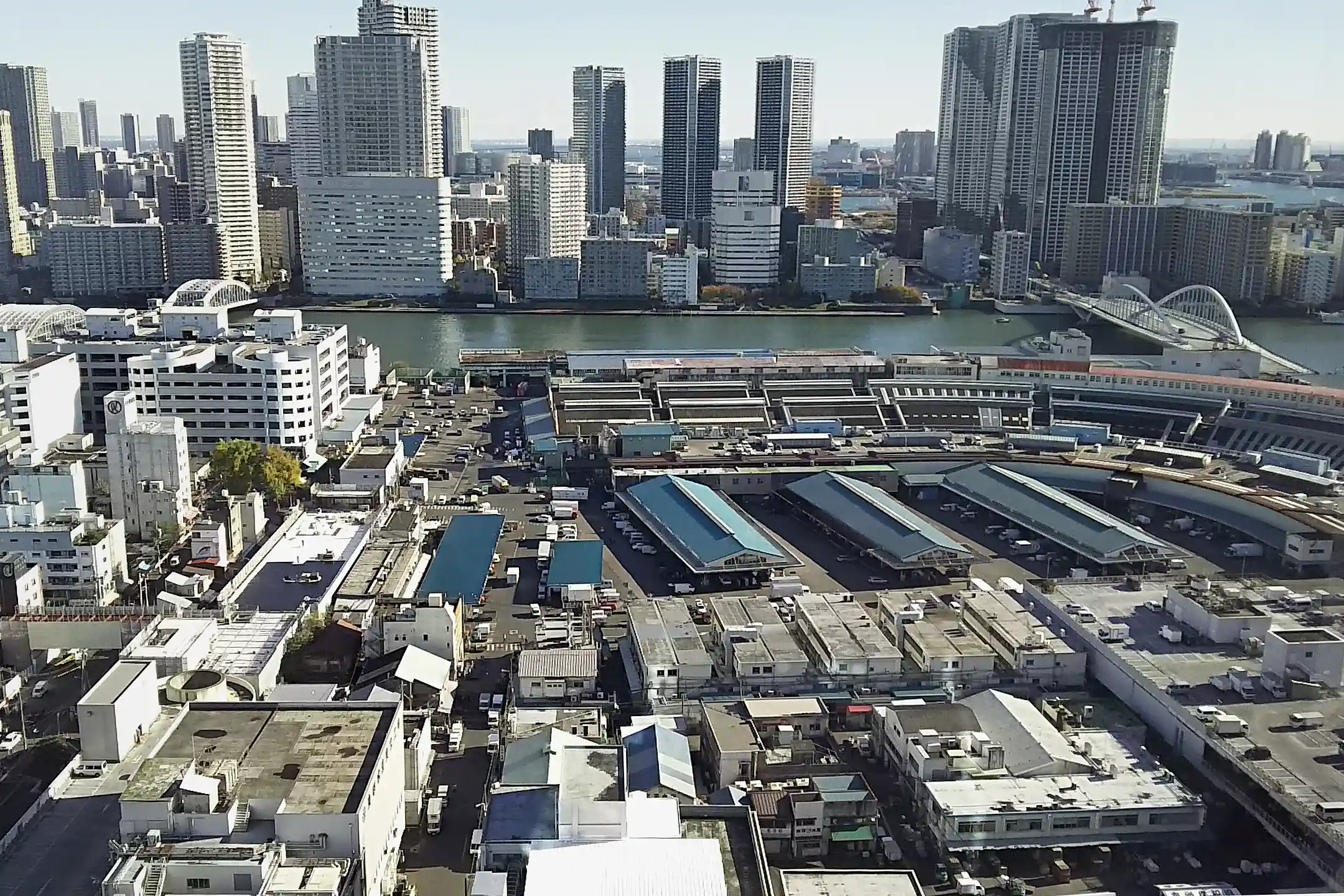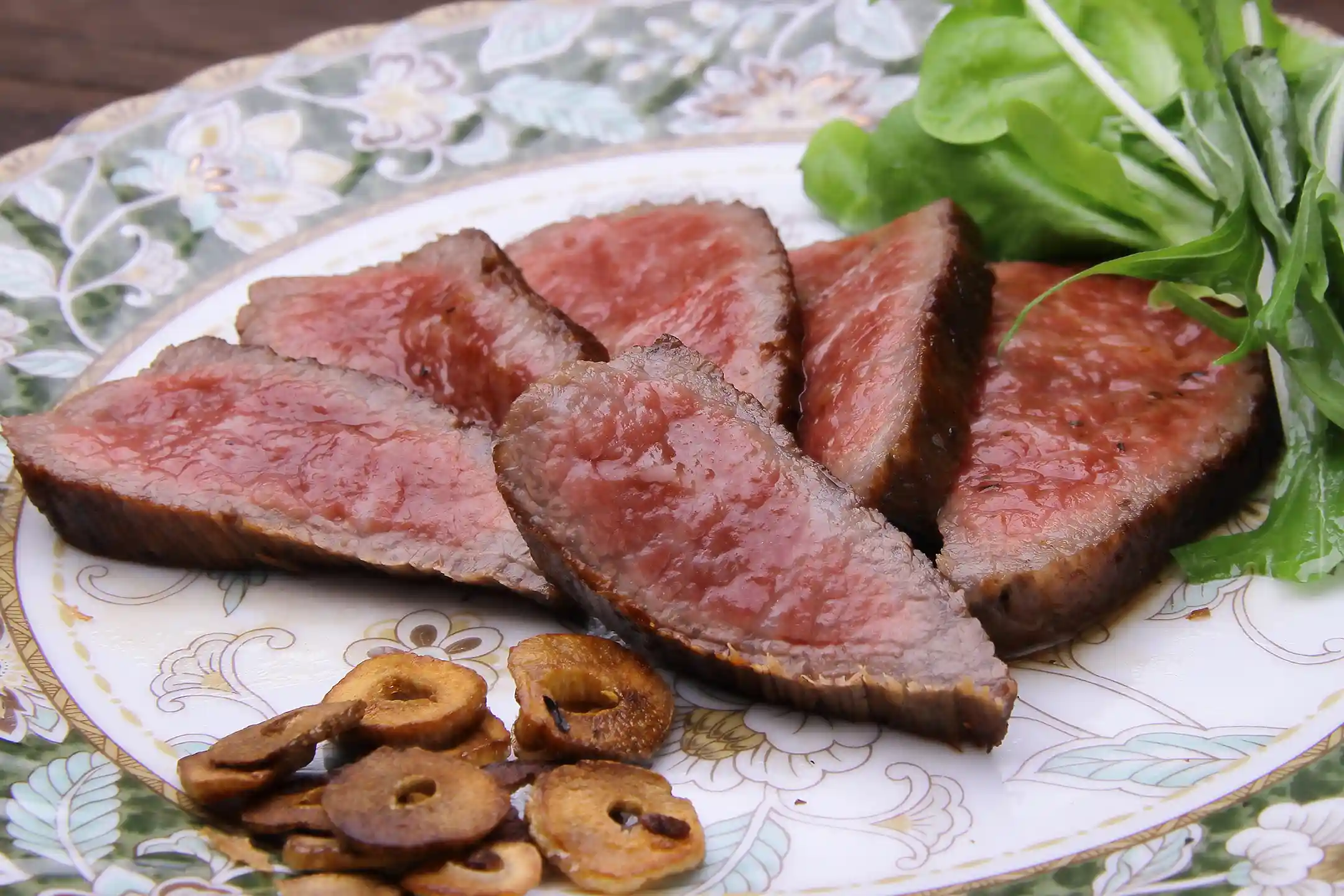Have you ever wondered why people talk about Tsukiji Fish Market as if it’s the heart and soul of Japan’s seafood scene? For a long time, it stood as one of the world’s busiest fish markets—an iconic place where you could glimpse a whirlwind of fresh fish, lively auctions, and a rich slice of everyday Tokyo life. Even after the main market relocated to Toyosu, the surrounding Tsukiji area continues to fascinate visitors with its diverse food culture, close-knit community, and enduring legacy.
If you’re coming from a Western perspective—where you might see larger cuts of fish or primarily lean meats—stepping into Tsukiji can almost feel like you’ve landed in a completely new universe. But rather than labeling it as “unusual,” you’ll probably find it more rewarding to ask: “What historical forces shaped this market?” or “How did it evolve into such an integral part of Tokyo?” In this guide, I’ll take you through the history of Tsukiji, explain what makes it culturally important, and show you how to make the most of your visit—whether you’re stopping by for sushi, scouting out unique dried seafood, or just soaking up the unique fusion of tradition and modernity.
Overview of Tokyo’s Fish Markets and Their Cultural Significance

While Tokyo is a massive metropolis, it also holds centuries of food-related traditions that go back to the Edo period. In particular, the fish markets here embody Japan’s deep connection to the sea. Rather than just supplying fish to city residents, these markets have functioned as cultural gathering spots—sites where techniques for preserving and eating fish have flourished and new business customs have been invented.
In many Western countries, “meat culture” has historically dominated, so seeing the immense variety of fresh fish at a Japanese market can be an eye-opener. At first, you might be tempted to describe it as “exotic” or surprising. Yet once you dig into the background—like how Japan’s island geography affects its cuisine, or how market auctions have been perfected over centuries—you’ll see there’s much more to it than a surface-level novelty.
For instance, Tsukiji’s roots trace back to the Edo period, when fishmongers were invited to supply fresh seafood to the growing city of Edo (now Tokyo). Over time, the market adapted to modernization efforts, from new transportation networks to improved cold-storage techniques introduced post-Meiji Restoration. These influences shaped how Japanese fish markets blended tradition with modern technology.
Anthropologist Theodore C. Bestor even referred to Tsukiji as “the fish market at the center of the world,” capturing how it once connected fishermen, wholesalers, and global cuisine aficionados. Auction floors buzzed at dawn, tourists huddled with cameras, and sushi shops thrived nearby—forming a unique ecosystem of commerce, culture, and conversation. And while the main wholesale market has since moved to Toyosu, Tsukiji’s Outer Market and the memories of its iconic trading floor continue to play a vital role in Tokyo’s food culture.
Exploring the Tsukiji Fish Market: Tokyo’s Historic Icon
Historical Origins and Cultural Impact
Opened in 1935, Tsukiji Fish Market was considered groundbreaking at the time—introducing more modern facilities for handling and distributing marine products. It developed rapidly in the pre- and postwar eras, eventually becoming one of the most important fish markets worldwide. Here, intermediate wholesalers perfected the art of quickly judging freshness—an ability known as mekiki—and setting fair prices, all underpinned by a longstanding sense of responsibility toward marine life.

When you witness the famous tuna auctions (in their original Tsukiji days, or now at Toyosu), you might be struck by the intense drama. Giant tuna laid out on the floor, wholesalers peering at tail cuts under flashlights, and final sales concluded in seconds through a flurry of gestures and calls. Many visitors from overseas used to queue up in the wee hours just to watch the spectacle. It’s mesmerizing, but seeing this purely as a show can overlook how integral it is to everyday life for those who work there. Appreciating its deeper significance brings you closer to the people and practices that built Japan’s seafood trade.

The market also exemplified Japanese “hospitality.” Workers often welcomed tourists, although the surge in visitor numbers sometimes led to congestion or disruptions in the early morning hours. Tsukiji kept refining its visitor rules—an ongoing negotiation that shows how different cultural expectations and norms must adapt when people of various backgrounds gather in one space.
The Transition to Toyosu Market: Modernization and Sustainability
After decades of service, Tsukiji faced a need for upgraded facilities, prompting a relocation to Toyosu Market in October 2018. Toyosu now has more advanced logistics systems, temperature controls, and digital auction displays. While some say this new site lacks the “grit and energy” of Tsukiji, many applaud its improved sanitation, wider walkways, and advanced environmental measures.
From an international perspective—especially if you’re interested in sustainability—Toyosu’s efforts to lower CO₂ emissions, manage food waste, and adopt electric turret trucks all align with broader global movements to address climate change. Fisheries groups here also engage in marine resource stewardship, reflecting a nationwide push toward sustainable seafood.
Yes, you can still watch tuna auctions at Toyosu through an observation deck, though you’ll no longer stand on the auction floor next to the wholesalers. Despite that, the market’s mission remains: bridging Japan’s marine resources with domestic and international dining tables in a way that unites old-school craftsmanship with forward-looking technology.
Culinary Highlights at Tsukiji Fish Market
Early-Morning Tuna Auctions and Market Tours

You might have heard tales about Tsukiji’s tuna auctions starting at the crack of dawn—rows of giant bluefin tuna, fast-paced bidding, and cameras flashing. While the auctions themselves moved to Toyosu, that high-energy atmosphere continues there, just in a more controlled environment. In both places, you’ll see a meeting of tradition and commerce, where local wholesaler expertise and global interest converge.
For Western travelers used to large steaks or simpler cuts, observing how meticulously each tuna is graded and sold can be eye-opening. It goes beyond entertainment: it’s a serious transaction in a profession with many inherited practices. Still, the auctions remain photogenic—just keep in mind that this is a bustling workspace, so please follow posted rules and guidance to avoid disrupting daily operations.
Enjoying Sushi and Local Specialties
Sampling sushi or seafood bowls right at the market is a must. Numerous stalls and small restaurants in Tsukiji’s Outer Market still offer an impressive range of fresh fish—and the price-to-quality ratio can be surprisingly good. Visitors from the West often say, “I’ve never tasted raw fish this exquisite,” because the concept of “fresh” here is taken to another level.
Though the major wholesale operations have relocated, Tsukiji’s Outer Market is lively as ever, filled with vendors selling everything from tamagoyaki (sweet omelet) to dried seafood, seaweed, and cooking tools. You can pick up distinctive seasonings or ingredients to bring home—souvenirs that reflect Japan’s approach to making the most of the ocean’s bounty. Considering issues like overfishing or the decline of tuna stocks also sparks dialogue about how to ensure seafood’s future for the next generation. It’s a reminder that a plate of sushi can connect you to broader environmental and cultural concerns.
Practical Tips for Visiting Tsukiji Market
Ideal Visiting Hours and Access
If you want to experience Tsukiji at its liveliest, arrive around 8 a.m. or earlier, as most businesses wind down in the early afternoon. Be prepared for crowds—this is one of Tokyo’s most popular destinations, especially on weekends. Located near Tsukiji Station on the Tokyo Metro Hibiya Line and Tsukiji-Shijō Station on the Toei Oedo Line, it’s within walking distance of Ginza, Shimbashi, and Yurakucho.
If you’re aiming to see the Toyosu tuna auction, get up very early, and note that you might need to apply in advance depending on the schedule. While it’s an exciting experience, remember that it’s a functional market, and staff are there to work. Showing mutual courtesy will help preserve the market’s open-door policy, letting future travelers continue to visit.
Manners, Photography Rules, and Local Etiquette
Tsukiji’s Outer Market feels more casual than Toyosu, but it’s still a busy spot where shop owners rely on swift customer flow. When you take photos, ask first to avoid intruding on people’s privacy or hindering walkways. Don’t handle the fish without permission, and resist the urge to haggle on prices—each vendor has a reason behind their rates, and bargaining is unusual in Japanese food markets.
If you plan to snack on the go, step aside rather than walking and eating. Many shops offer small sample bites—just remember to keep things neat and avoid littering. Western travelers sometimes note how “polite” and “efficient” the interactions are; you’ll quickly see that respect for others is crucial in a crowded space like Tsukiji.
Sustainability and Eco-Friendly Practices
Although Tsukiji’s outer market may feel “older,” local businesses do adopt modern environmental strategies. Some vendors use minimal packaging or encourage customers to bring reusable bags. Even small gestures—like refusing a plastic bag or not over-ordering—reinforce the Japanese ethos of mottainai (avoiding waste). If you’re drawn to these ideas, look for stores that highlight their alignment with the Marine Stewardship Council (MSC) or the Marine Eco-Label (MEL). These certifications help you support sustainable fishing and thoughtful resource management.
Beyond Tsukiji: Other Markets and Cultural Experiences in Tokyo
Toyosu Market and Other Neighborhood Markets

If you’re interested in going beyond Tsukiji, Tokyo has multiple markets worth exploring. Toyosu Market is the new flagship, equipped with modern technology like integrated temperature control and digital signage. You can observe auctions from a second-floor viewing platform. You might also check out Ota Market, known for its produce and flowers, or Adachi Market, hosting monthly public open days for fresh tuna carving shows.
In Taito Ward, Ameya-Yokocho (Ameyoko) has a long history as a post-war street market—selling fresh fish, dried goods, and more, making for a vibrant, lively atmosphere reminiscent of certain Western bazaars. Taking in several markets can be an excellent way to compare Japan’s fish culture with your own home traditions, bridging cultural gaps and fueling interesting conversations about how each region handles food distribution and consumption.
Cultural Workshops and Art-Related Activities
If you find the fish market environment inspiring, consider trying a sushi-making class or attending a short seminar on Japanese fish processing. Many such programs include English guidance and can be found near Tsukiji. Sharpen your skills in preparing nigiri or maki rolls, then savor your creations for lunch—a hands-on way to appreciate the diligence that underpins sushi’s simplicity.
Alternatively, if you want to mix art with your culinary adventure, head to galleries in Ginza or catch a show at Kabukiza Theatre, both easily accessible from Tsukiji. The area’s unique blend of tradition and modern style allows you to seamlessly weave in a cultural event, rounding out a day of exploration that feels authentically Tokyo.
Conclusion
Carrying on fish market traditions that date back to the Edo era, Tsukiji Fish Market once symbolized Japan’s global food aspirations—and even now, its Outer Market buzzes with vendors selling sushi, seafood bowls, and all kinds of culinary treasures. Meanwhile, Toyosu Market represents the next step: seamlessly blending modern tech with respect for time-honored practices, all while emphasizing sustainability. Exploring both Tsukiji and Toyosu can broaden your understanding of how Japan has continued to mesh heritage and innovation.
From a Western viewpoint, the fast-paced tuna auctions or the detail-obsessed approach to freshness might feel unfamiliar at first. Yet by looking beyond “the show,” you’ll see a culture and economy built on an authentic appreciation for the ocean’s bounty. The fish on display aren’t just goods; they embody a long-standing ethos that balances skill, collaboration, and an ongoing quest to adapt responsibly to changing times.
Ultimately, Tsukiji Fish Market (including its legacy and outward-facing shops) offers a microcosm of Tokyo’s dynamic, many-layered culture. Whether you delve into its historical roots, savor sumptuous sushi, or explore local efforts in environmental conservation, each experience reveals the complex narrative of how a city and its markets evolved together. The real thrill of a visit is uncovering these layers and leaving with a renewed sense of curiosity—and, yes, quite possibly with a full belly of amazing seafood.
Author Bio

Natsumi Ikeshita
Experienced in B2B SaaS marketing and “omotenashi,” Natsumi directs media operations with a focus on hospitality and cultural storytelling. Her global experience and marketing skills bring fresh value to Bespoke Discovery’s content.





.webp)
.webp)